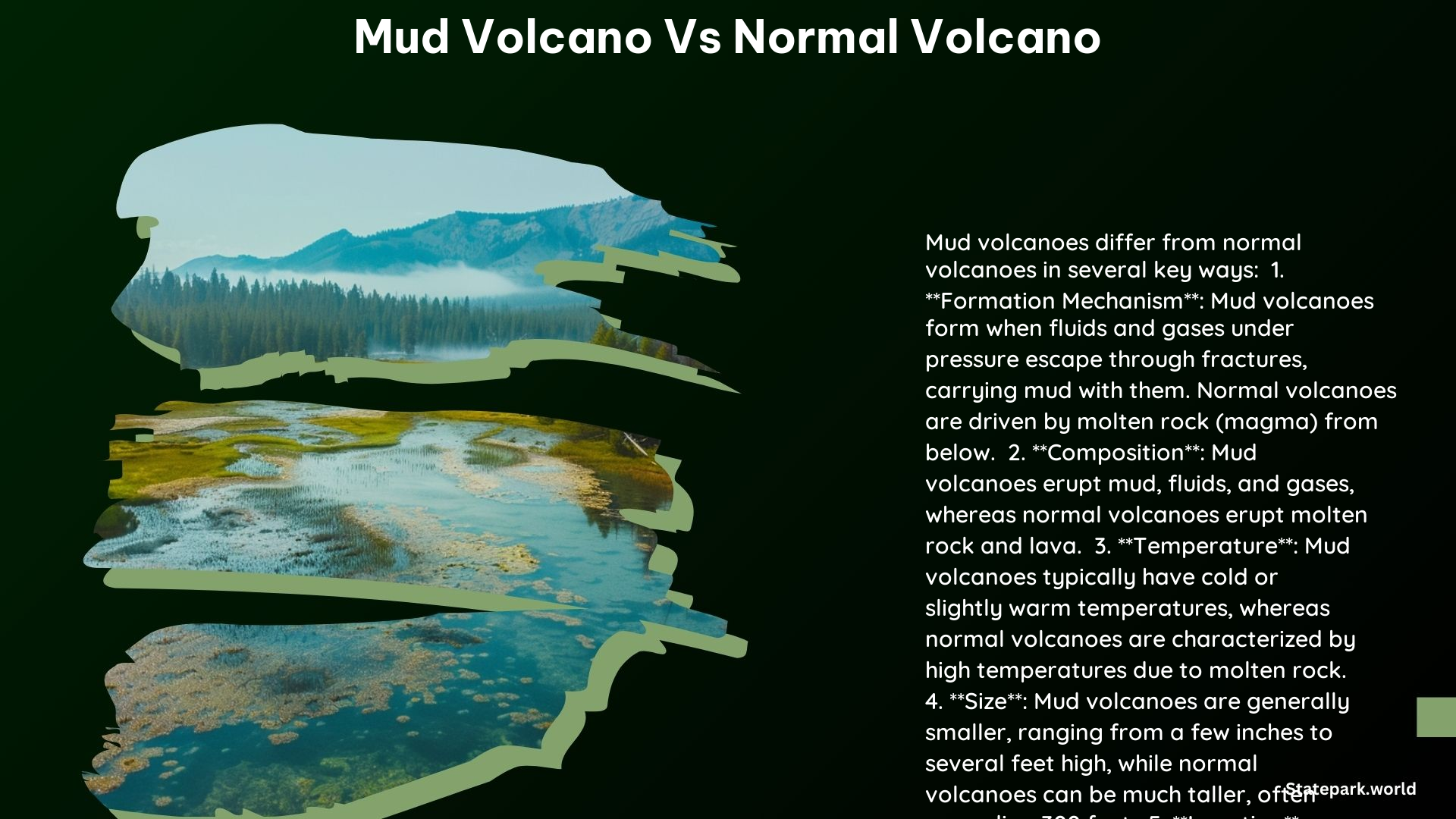Yellowstone National Park is a geological wonderland, home to a diverse array of natural wonders, including both mud volcanoes and normal volcanoes. While these two types of volcanic features may appear similar at first glance, they exhibit distinct differences in their appearance, behavior, and eruption mechanisms. In this blog post, we’ll delve into the key distinctions between mud volcanoes and normal volcanoes in Yellowstone, providing you with a comprehensive understanding to enhance your national park touring experience.
Appearance and Behavior
Mud Volcanoes
Mud volcanoes in Yellowstone are characterized by domes, gryphons (cones), and salses (pools). These features can be either dry or wet, but they do not form the distinctive volcanic cones associated with normal volcanoes. Mud volcanoes can be hot or cold, depending on the source of the mud, and they are often associated with natural gas and oil deposits.
Normal Volcanoes
In contrast, normal volcanoes in Yellowstone form distinctive volcanic cones. These features are typically driven by molten rock (magma) from below, resulting in more violent and explosive eruptions compared to mud volcanoes.
Eruption Mechanisms and Materials Expelled

Mud Volcanoes
Mud volcanoes are driven by hot water and natural gas, rather than molten rock. Their eruptions involve a combination of mud, fluids, and gases, which are expelled from the surface.
Normal Volcanoes
Normal volcanoes in Yellowstone, on the other hand, are driven by molten rock (magma) from below. Their eruptions involve the expulsion of molten rock, ash, and gases.
Key Differences
- Source of Eruption: Mud volcanoes are driven by hot water and natural gas, while normal volcanoes are driven by molten rock.
- Materials Expelled: Mud volcanoes expel mud, fluids, and gases, whereas normal volcanoes expel molten rock, ash, and gases.
- Appearance: Mud volcanoes form domes, cones, and pools, while normal volcanoes form distinctive volcanic cones.
Yellowstone National Park
Mud Volcanoes
Yellowstone National Park is home to numerous mud volcanoes, often referred to as mudpots. These features are a testament to the park’s dynamic geological processes and provide visitors with a unique opportunity to witness the power of geothermal activity.
Normal Volcanoes
In addition to mud volcanoes, Yellowstone is also home to several normal volcanoes, including the Yellowstone Caldera, which is a large volcanic system that has shaped the park’s landscape over time.
Advanced Details and Specifications
- Cost: Visiting Yellowstone National Park costs $35 per vehicle for a 7-day pass.
- Timings: The park is open year-round, but some facilities may have limited hours or be closed during winter.
- Directory: The park’s headquarters are located at 1 Yellowstone National Park, WY 82190.
- Hours: Visitor centers are open from 9:00 AM to 5:00 PM, but hours may vary depending on the season.
- Rates: Camping fees range from $20 to $32 per night, depending on the campsite.
- Value: Yellowstone National Park is a unique and valuable natural resource, providing insights into geological processes and supporting diverse ecosystems.
Real-Life Incidents and Statistics
Lusi Mud Volcano
The Lusi mud volcano in Indonesia has been erupting continuously since 2006, covering an area of approximately 2.7 square miles.
Dashly Island
A mud volcano eruption on Dashly Island in the Caspian Sea in 2021 was captured on video and lit up the night sky.
Reference Links
- https://www.sciencedirect.com/topics/earth-and-planetary-sciences/mud-volcano
- https://www.reddit.com/r/geography/comments/16ywlae/can_someone_explain_how_mud_volcanoes_happen_are/
- https://earthsky.org/earth/mud-volcanoes-definition-what-are-mud-volcanoes/
- https://theconversation.com/what-are-mud-volcanoes-173198
- https://www.usgs.gov/news/volcano-watch-heres-dirty-truth-about-mud-volcanoes
